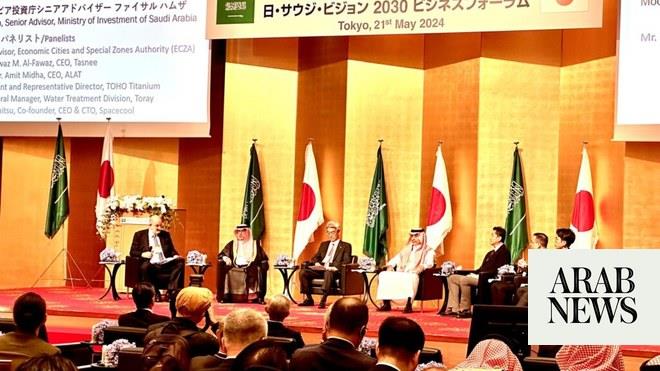
Ohayou gozaimasu!
Good morning everyone, and welcome.
I am delighted to join you here in Tokyo, one of the world’s most dynamic cities. And what a time to visit. With the cherry trees on the verge of blossoming, I expect we will soon see the city and surrounding areas at their most beautiful.
I want to begin today by expressing my gratitude to the Japan Cooperation Center for Petroleum and Sustainable Energy for co-hosting this event, and for the invitation to share my thoughts on the global energy transition.
It is a real treat to speak to a room full of researchers, policymakers, and problem-solvers. This is an audience who are undeterred by the challenges ahead and who have both the will and capacity to chart a path forward.
I know that this is also an audience that regularly attends conferences, and so I suspect you are all a bit weary of hearing the phrase “this is a timely event.”
But at the risk of repeating a cliché, ladies and gentlemen, this really is an especially timely event.
Allow me to set the scene.
Like the cherry blossoms around us, the global economy is reawakening from a period of slumber. The pandemic is behind us, and travel, trade, and manufacturing activity continue to roar back.
Along with that resurgence has come a resurgence in demand for the steady supply of energy to make it all possible. Unfortunately, supply has struggled to meet this growing demand, and high prices, painful for consumer and business alike, are the outcome.
Suddenly, we are in an energy crisis. So, how did we get here?
For too long, governments and investors indulged in overly optimistic assessments of how quickly non-carbon alternative energies could be scaled, and what share of demand these alternatives were prepared to meet. Under these misperceptions, investments in oil and gas were disincentivized and plummeted by around one third over the past decade. The chronic underinvestment resulted in diminished production capacity and a dwindling global energy supply.
That was manageable during the pandemic, when economic activity slowed down. But that is no longer the case, and alternatives have not come online fast enough to ease the strain. The tragic conflict in Ukraine has further compounded the problem.
Now, the oil and gas industry is scrambling to quickly ramp up production, with the encouragement of policy makers, after years of being discouraged by those same policy makers from doing just that!
Amid these developments, many have awakened to what I suspect most of you here today have long understood, that the hydrocarbon is expected to be a part of the global energy mix for decades to come. There are few other viable options to affordably and reliably meet the full breadth of global energy needs right now and the foreseeable future.
But it is well-understood that we cannot simply drill and refine our way out of the crisis. The climate is in peril, and a global net-zero future will help avoid catastrophe.
Which brings us to this timely gathering. We are here today to help answer an urgent question: how can we meet ever-increasing demand, ensure a steady supply of affordable energy, and also achieve our net-zero ambitions?
I will manage your expectations by saying at the outset that I do not have all the answers. What I do know is that there is no single solution. We will need to harness an array of technologies, some proven, others in development, to reach our goals.
As we assess the options before us, it is critical that we be “technology agnostic.” We cannot prematurely pick winners and losers. That approach is what landed us in this crisis to begin with.
There is a saying in English: “when all you have is a hammer, everything looks like a nail.” It is a reminder that if you focus too intently on any one option, you risk ignoring other potential solutions.
At COP 26, I was encouraged to hear Prime Minister Fumio Kishida pledge that “Japan will take advantage of all available options of technologies” in its pursuit of a net-zero energy supply. That is the right approach to achieve the balance of efficient, effective, and affordable.
If we let science guide us, we can develop more appropriate tools for problems that our hammers alone may be poorly suited to solve. After all, what works to power personal transport more sustainably may not be applicable in heavy industry or aviation. What makes sense in an urban environment may not work in a rural setting.
We need an à la carte menu of technologies for every context.
At the same time, we cannot rely exclusively on scientists and engineers to perfect these new technologies. Innovation does not occur in a vacuum, nor does it happen overnight.
The right mix of policy and regulations will incentivize research and spur demand. Engaging our industry can help set clear objectives and tap into our unique expertise. Before there is widespread adoption, consumers will need to be equipped with the knowledge to make informed decisions.
That means that advancing the technological solutions to meet the different net-zero ambitions will require the cooperation of all stakeholders. Given the magnitude of emissions reductions that we need to achieve, such cooperation will need to happen in parallel around the world.
Japan’s leadership will be critical on the global stage. The technological capacity here is astounding, and there is a proud history of introducing paradigm-shifting technology across multiple industries.
Already, Japan is pioneering many exciting lower-carbon solutions, technologies like more efficient and more sustainable fuel cells, hydrogen-powered engines, and low-carbon synthetic fuels. And of course, Japan was the recipient of Aramco’s first shipment of blue ammonia, which was subsequently used in lower-carbon power generation, a potent demonstration of both hydrogen’s potential and how international collaboration can advance our shared goals.
Japan can lead in other ways as well. Just as important as developing new technology is showcasing a national model for an orderly energy transition. Prime Minister Kishida’s remarks at COP 26 were an important signal to others. The government’s Sixth Strategic Energy Plan, with its pragmatic approach to a net-zero future, is another. As Japan moves forward with implementation of that strategy, everyone here today should consider how they can leverage their unique capacities in support.
I would like to close here today by highlighting a few innovative projects Aramco is engaged in to advance a more sustainable, climate-conscious, and energy efficient future.
First and foremost, we remain focused on reducing the upstream carbon intensity of our core operations. We do so through a number of channels, like capturing the natural gas that would otherwise be flared and using it for domestic power generation through our Master Gas System. Or by harnessing artificial intelligence to ensure maximum efficiency across our systems, which reduces energy waste. Since 2015, we have also operated a carbon capture and sequestration project at our ‘Uthmaniyah field, which has the capacity to capture up to 800,000 tonnes of CO2 per year.
As a result of these and other initiatives, Aramco’s upstream carbon intensity is among the lowest in the industry, all while maintaining our cost advantage.
However, these efforts alone might not be enough to meet our 2050 net-zero ambitions. That is why we continue to research and develop technologies with the potential to reduce or eliminate carbon emissions entirely.
Technologies like hydrogen, which has the potential to serve as a fuel source for power-intensive transport and in hard-to-abate industries where electrification may not be viable or cost-effective.
Or CCUS technology, which the International Energy Agency has identified as essential to meeting global net-zero goals. I mentioned earlier our ‘Uthmaniyah field; with the knowledge gained from that project, Aramco is currently working with others to establish a hub near Jubail on the Kingdom’s eastern coast that aims to capture and store 9 million metric tons of CO2 per year–and not just ours, with over a third of that CO2 coming from other sources.
We are also actively developing low-carbon synthetic fuels for use in internal combustion engines. Not only could that provide a potential 70% to 90% reduction in CO2 over conventional fuels, but it could prove a viable option in sectors where electrification and other alternatives are not yet practical.
This work on more sustainable fuels already has real world applications: earlier this month, Aramco supplied fuels with fifty-five percent sustainable components for use in F2 and F3 races and, in the future, we aim to introduce low-carbon synthetic components to these race fuels, perhaps paving the way for their eventual use in personal transport.
One last pertinent area of Aramco’s research and development I would like to highlight is our work on polymer- and carbon-based materials. We believe that these advanced materials have potential as a productive use for captured carbon, and could eventually reduce the demand for steel, concrete, and other conventional materials whose production and use is responsible for a significant share of global emissions. Indeed, global net-zero ambitions will be hard to meet without a Materials Transition.
These are just a few of the projects that we are working on at Aramco. We think that they have the potential to reduce emissions while supporting the steady supply of more affordable energy the world needs as it transitions to a net-zero future.
There are, of course, other promising ideas and technologies, many of which are being pioneered by people in the room here today. Each merits full consideration, and the next two days are an opportunity to share, discuss, and debate.
More importantly, I hope this symposium also paves the way for collaboration. The task ahead is too big for any one person, company, or country. Reaching our net-zero ambitions will require all of us to work together in pursuit of a more sustainable, climate-conscious future. Let us use the inspiration of Spring in the air this week to deliver that vision.
Thank you.









